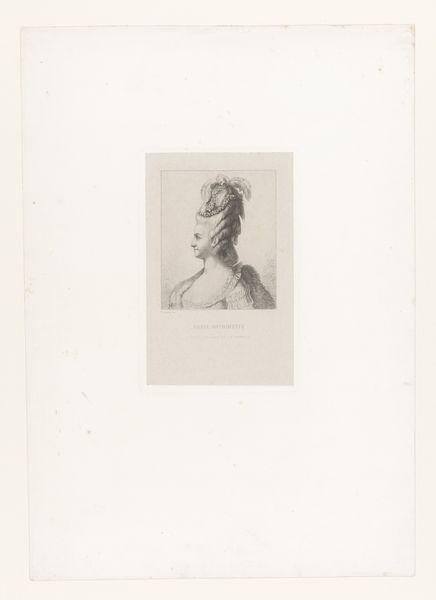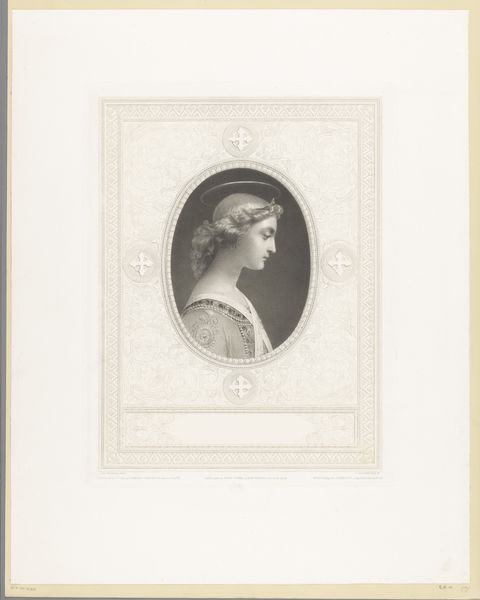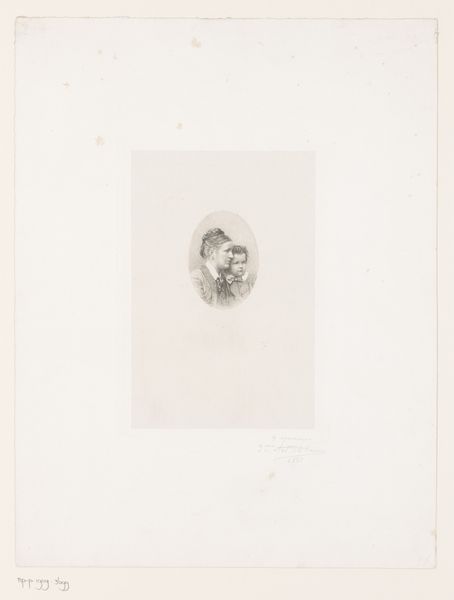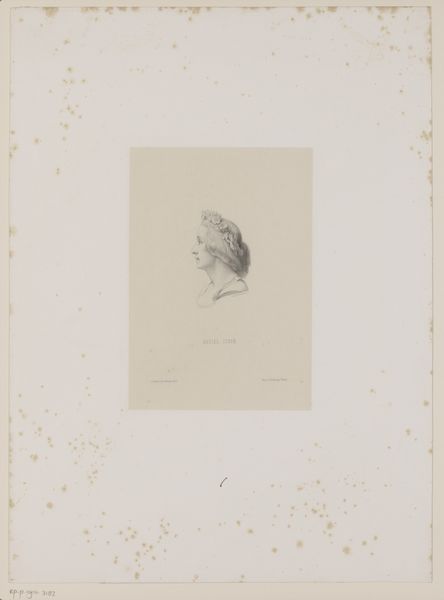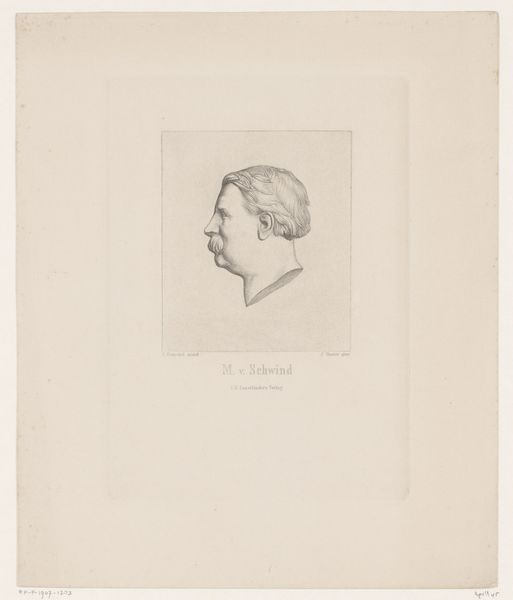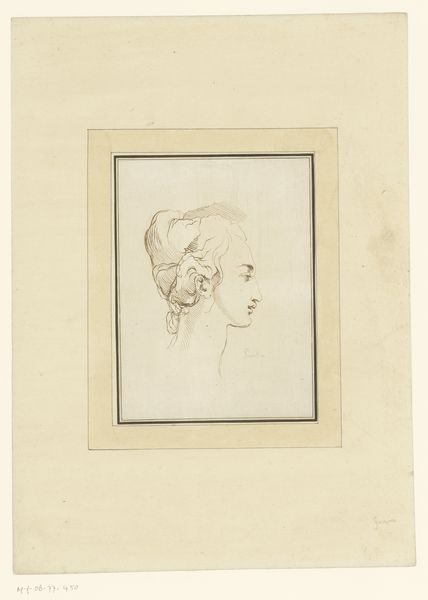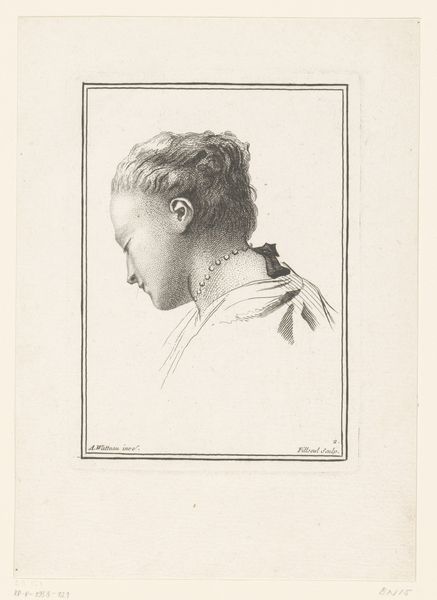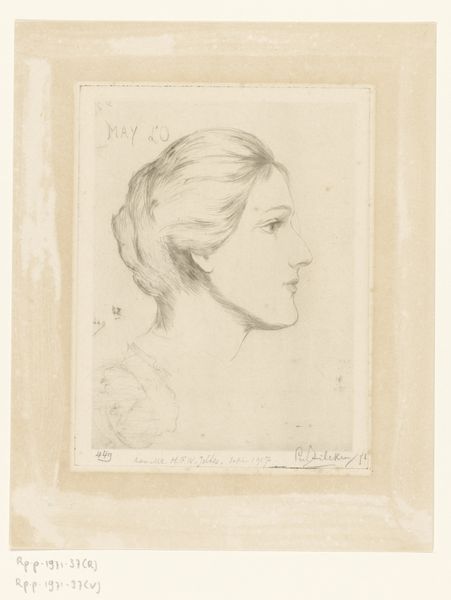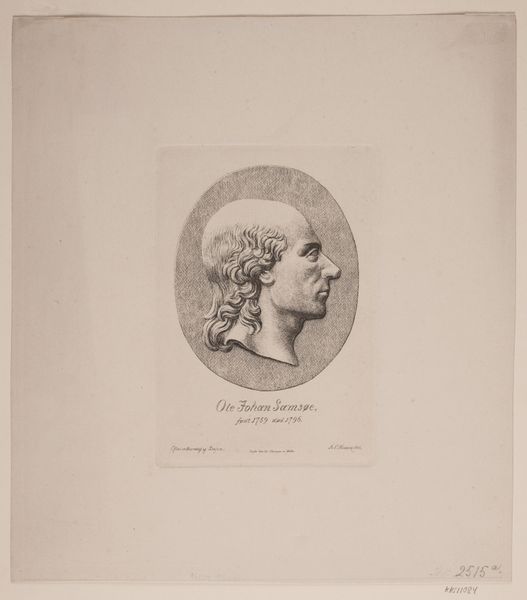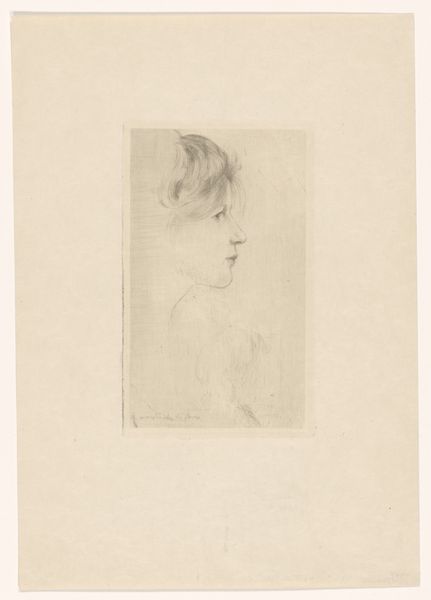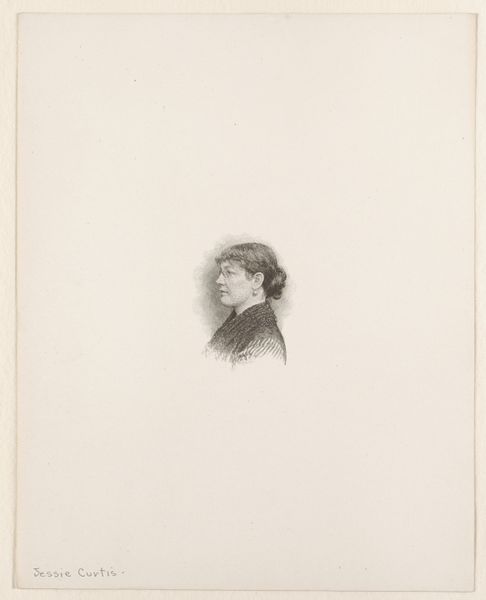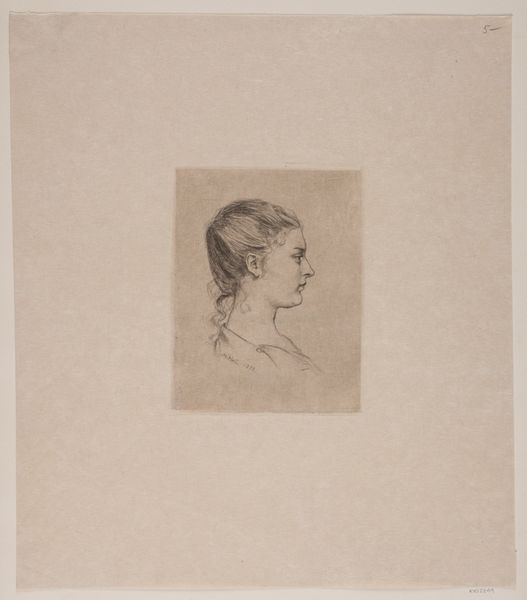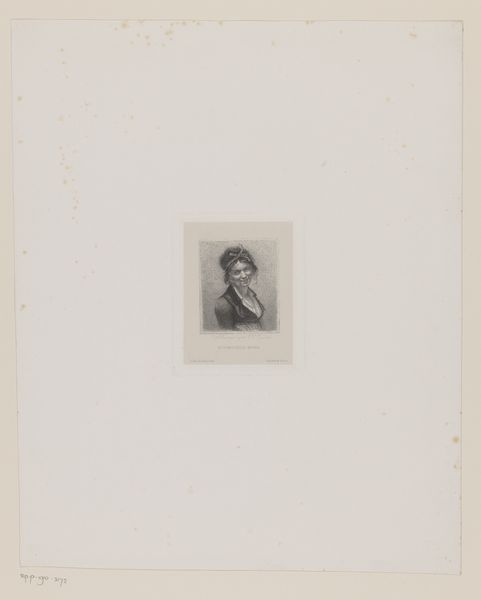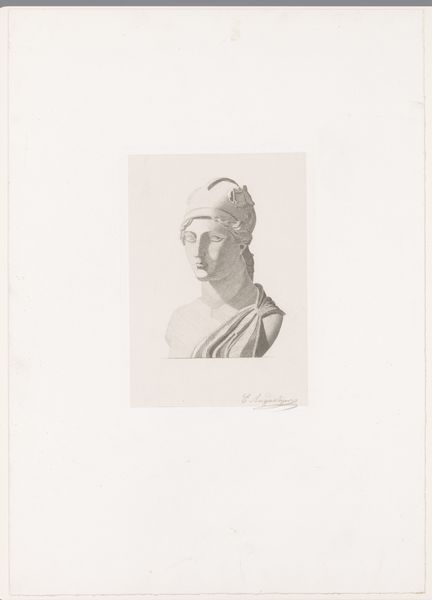
drawing, paper, pencil
#
portrait
#
pencil drawn
#
drawing
#
pencil sketch
#
paper
#
pencil
#
academic-art
Dimensions: height 254 mm, width 183 mm
Copyright: Rijks Museum: Open Domain
Editor: This is a pencil drawing from 1868 by Léopold Flameng. It’s a portrait of Marie Louise of Austria. It has this very classical, almost Neoclassical feel to it. What do you see in this piece, from your perspective? Curator: From a historical perspective, the interesting thing here is the conscious construction of imagery, and the power that implies. Marie Louise was, after all, Napoleon’s second wife. This drawing, created long after Napoleon’s defeat, participates in a wider narrative shaping her legacy. Editor: So, the image of Marie Louise, years later, still had political implications? How so? Curator: Absolutely. Consider the context: post-Napoleonic France. Images of imperial figures could serve to either legitimize the restored monarchy or subtly champion Bonapartist ideals. Who was commissioning or consuming this portrait, and what message were they hoping to convey about Marie Louise's role in history? Is she seen as a tragic figure, a symbol of a fallen empire, or simply as a member of the Austrian aristocracy? Editor: That’s fascinating, I hadn't considered the politics of imagery in a seemingly straightforward portrait. Does the style – this academic drawing – play a role in that political messaging? Curator: The academic style would have lent the image a sense of legitimacy and historical weight. It harkens back to classical ideals of beauty and power, associating Marie Louise with a lineage of important figures. Think of the choices that are being made about how this person is represented. Everything is saying something! Editor: Wow, I see it so differently now! It's not just a portrait, but a constructed image meant to convey very specific messages about power, legacy and history. Curator: Exactly! Analyzing art this way allows us to understand its enduring social relevance.
Comments
No comments
Be the first to comment and join the conversation on the ultimate creative platform.
